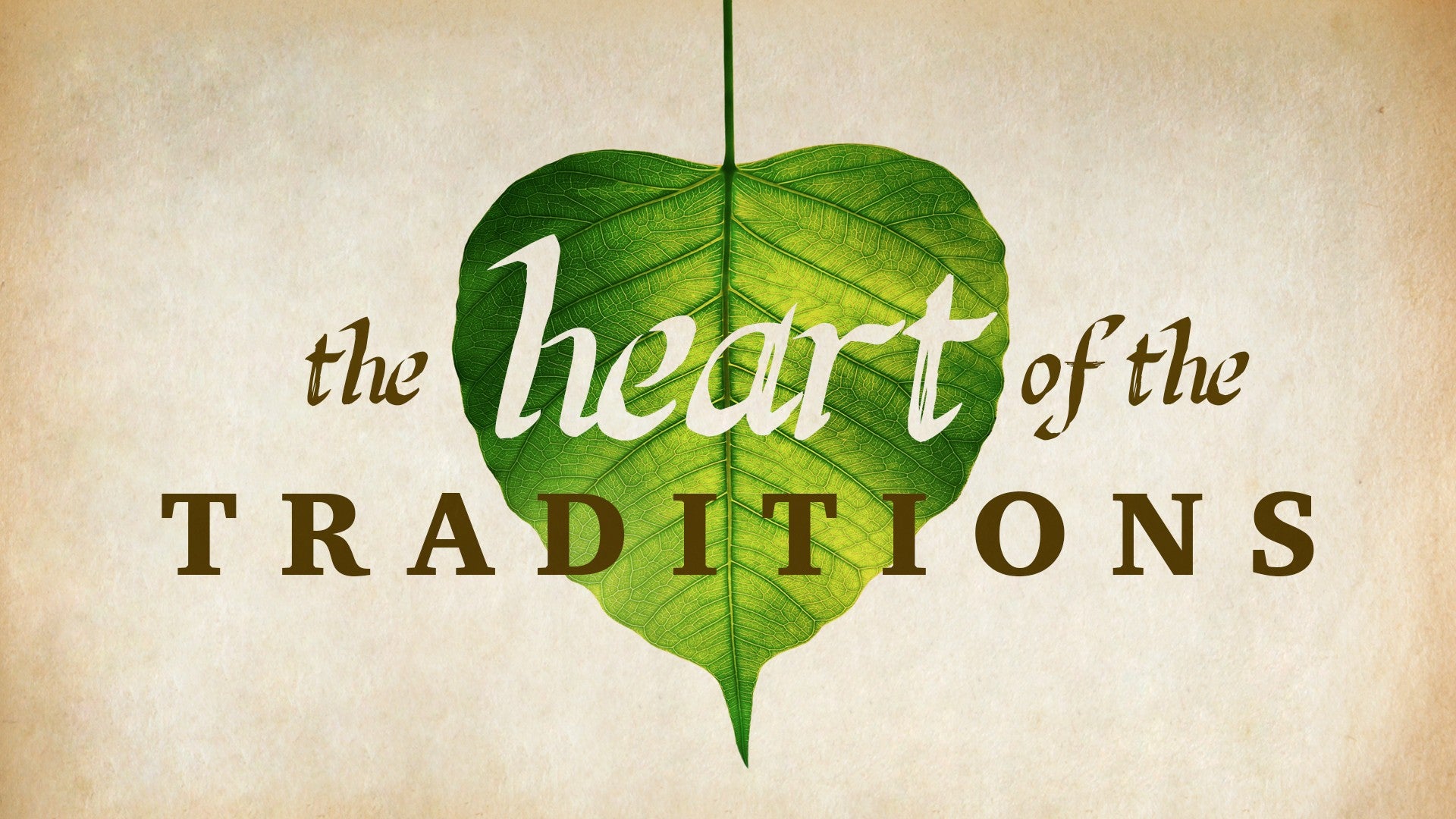Description
About This Video
Transcript
Read Full Transcript
We have been talking of surrender in the last few episodes. We have looked at who is surrendering, to whom are we surrendering? But the big question is, how do we surrender? How do we surrender in the different modes of our being? So in the yoga tradition, we have different tools to help us to experience surrender and to practice it in a more systematic manner.
One of the ways of surrendering is something that all of us are constantly involved in, its action. So if we know how to surrender our actions, then we would find ways of liberating ourselves in everything that we do and thereby who we are. So when I talk about action, or in Sanskrit the word is karma, what do we mean by action? Can you stay without action? What do you think?
Is only moving the hands and body an action, or is even a thought an action, or is even our breath an action? Surrender in action is the basis of one of the streams of yoga known as karma yoga, where action itself becomes a way of discovering union of all the different parts of oneself. And uniting all of these different parts within oneself with something which is larger. The plot of surrender is the process of becoming free of our limited narrow perspective and understanding the larger context and playing according to the rules of that larger context. One thing that emerges as a very important requirement thereof is the attitude in which one does the work.
The question also that emerges is who is the one who is doing the work? Which aspect of oneself is doing that action? Now imagine if you were to drive a car on a busy road and suddenly one became so full of oneself driving the car that you said, oh I don't care about any rules, I am driving the car. Then you can imagine the kind of disaster there would be on the roads if everybody took on that particular attitude. But if one recognize the fact that I am just one of the other drivers on this road, there are rules on this road.
And I try and put that into an experience. I recognize that the car can go at a certain speed and I allow myself to recognize the limits of that instrument that I am using and follow that. I am not the one who is imposing my will on a particular situation. But one becomes an instrument to fulfill in the best way possible that particular action. So the call on an individual when practicing surrender in work is to make this important shift of who is doing the work.
Is it who you think you are which doesn't take into consideration others and the qualities of the individual etc. Or is it the individual who recognizes that I have a certain role to play here and I play it to that extent and I do the best I can to play it in that particular manner. So one of the first factors in practicing surrender in works is to start recognizing who is the one who is doing the work. Is it my ego self with all its expectations who is throwing himself or herself in an action. Or is it possible to just hold back to just become more of a witness to become more of an instrument and then perform a task that is required of us to perform.
So when we speak of surrender in action the invitation is to become this instrument of action and not allow our baggages of expectations desires to make that particular action more heavy than it is required to be. The other important aspect of surrender in actions is the awareness of what one is doing and why one is doing it and how one does it. So we looked at who is doing the action and then we will next explore the question what are we doing. In an important philosophical text known as the Upanishad or the Katha Upanishad there is a beautiful story between a young boy and the lord of death Yama in which the boy has some very important questions regarding life and of course death itself and he wants to understand what is going on and in that discussion Yama or the lord of death brings up a very pertinent point he says that in life we are constantly making a choice between what we like and what is good for us. So there is this notion of prayers what we like and what is good shreyas and when deciding what we need to do in life the more we can stick to the choice of shreyas or the good over the prayers what we like again the result is that we are less burdened.
I think if you have got a hang of this of all the different discussions we have had around surrender the call to the practitioner is this ability to identify unnecessary baggage and allow them to drop and follow that which is more true and more liberating. We are so attached sometimes to our little baggages that the recognition of this attachment forms one of the key calls of the practice of surrender because the more we can allow ourselves to break through these limiting factors the more easy it will be for us to be uplifted towards a more freer state of being. So letting go of these baggages of preferences, likes, dislikes each of these adds a certain color that prevents us from seeing things for what they really are that in turn colors our actions colors our thoughts it is a very big web that is created around who we are. So the call of surrender is to say can we step back from this acquired web of entanglements and allow ourselves to become more free but this can only happen when it is possible for us to recognize first and foremost that there is a higher state and freer state and that there are ways of achieving that and since all of life is nothing but a movement we either enter movements of entanglements or we move into movements of liberations. So when we have to choose what we are doing the attitude in what we are doing is fundamental.
One can do one particular action and do that action with all its knots and entanglements or we can do that same action in a more free spirit because the action needs to be done and one has done it and that is as much as is required from that. So in karma yoga the invitation or the practice of surrender is very very helpful in letting us move beyond these different kind of entanglements that pull us down and don't allow us to free ourselves. So this idea of Shreyas and prayers when we are contemplating on what to do and how to do it the invitation is to choose Shreyas or the good over the prayers. Again the yoga tradition is not at all it's not prescriptive in the sense of the good and the bad but it is a I mean it just tells us very clearly that there are laws of the universe if you choose a certain action it will lead to certain consequences. So every karma will again acquire certain karma if you are familiar with the word as fruits of actions.
So if you choose an action which is free of baggages the consequences will allow you to be more free to move on and have greater freedom of choice in what will follow. So one of the greatest benefits in this practice lies in this liberating element of surrender. The other aspect of the attitude in work is the idea of why one is performing that work. So there is a very beautiful story there. One gentleman was passing near a building that was under construction.
First he saw one man who was sweating away and had a very heavy expression on his face and the man asked him what are you doing? He said oh this hard work you know I'm just doing this work to earn some money and survive. He moved on a little bit and he found that there was another man who was working away it was heavy work but had a more cheerful personality. So he asked him and what are you doing? So he said you know I'm working so that I can feed my family and so he was a little more happy in his activity.
The passerby walked on and met another man who was almost in bliss as he was doing his work. It was hard work but you could see him radiating joy. So then this man asked him and what are you doing and he said I'm constructing a temple this is my contribution to the construction of the house of God. So we see how the activity is the same but the attitude with which each activity was performed played a very important role in determining the quality of work that happened in the first place and secondly also in the experience for the person who was doing that work. So in surrender the more one recognizes that this action is not just for my temporary survival but every moment is an opportunity for me to express a possibility of the universe.
You can imagine how a small shift of that kind can result in great sense of freedom and joy. Try that out. None of these are easy there is no promise of this being easy but there definitely is a promise that if you can apply it you will necessarily face or necessarily experience the enormous benefits the liberating benefits of this practice. One of the other important attributes of surrendering works is the idea of samatvam the idea that is it possible to perform an action in a spirit of equanimity samatvam in Sanskrit. This is again a very important feature of any action that has to be performed.
If one has the or if one gets easily swayed by the result of the action in the sense that when one has performed an action and supposing it has not been a success that sense of failure can completely discourage the individual to the extent that the person would be afraid to try that whole experience again or engage in that activity again or completely reject it and you know be blocked in all other activities that follow or imagine if somebody is so excited about having achieved something that they need to focus on something after that because of that intense excitement it would not allow the person to steadily focus on the present action once again. So being swayed by either extremes or either pulls of emotions when one has performed an action can become like an obstacle in the continuous performance of that action in the best way possible. So samatvam yoga ucyate samatvam yoga is that which is the state of being in equanimity in every at every moment in life. Another important aspect about action and performing the action in the best way possible is doing that work skillfully and how can one perform an action skillfully. One is of course with a lot of training there is no shortcut to that so training is one of the best tools for acquiring skill but even in the context of training the more one is able to find the balance the more easy it will be for that individual to develop that particular skill.
I mean you can just imagine if a surgeon is a very is very excitable or is susceptible to depressions you can imagine how much time it would take that individual to master the art of performing a very what do you say a very detailed surgery. So in order to acquire that skill of perfection it is very important to free oneself of the pulls of our preferences which was discussed in the notion of becoming of acquiring samatvam this equanimity to help us become clear of our pulls of preferences and dislikes surrender opens us up to the possibility of listening listening to something which is more interested in acting in our best interest and trusting that we can follow that. The more we can follow that it also helps us gather our concentration in an easier manner the more we are able to focus on that activity without getting distracted the easier it becomes to acquire greater skill in that action and therefore in the Bhagavad Gita when talking about the best attitude in which one should perform a work is yoga stha kuru karmani being in our state of yoga perform an action that in turn will result in skill in works. If you can get a feel of this alignment that is taking place the whole experience of aligning is also directly linked to the idea of aligning with what so the notion of surrender in action is the art of finding the alignment with something which is in knowledge of that of the purpose of that action when we can discover that alignment then whatever one performs will be of the best in its quality and in the results that come from it one funny idea of this of course is the call on the doer not to be carried away by the results of the action that is being performed and you can imagine why that would be so because if one gets caught up in the fact that if I say it in this way it will only get that result it should only get that and for whatever reason if the other person who's listening to you is in a completely different mood and you don't get that particular result it can completely damage or completely discourage you from performing anything or saying anything and therefore surrender in works in karma yoga implies the following it requires of the performer of action it requires us you and me and all of us who are constantly engaged in action to become aware first and foremost of who is doing that action how is one doing that action and finally whatever action that one does can one do it with an attitude of detachment that allows us to perform an action for the sake of the action and do it to the best of our ability so in the Bhagavad Gita that is the call of Krishna he says that it doesn't matter what action is being performed just give your heart and soul to it because that is the action that needs to be done at this point and the result my friends is something that long time back I had tried practicing and I can share with you something that I experienced from the practice and the first thing that emerged from this experience was the fact that just developing a witness consciousness to just become more of an observer first and foremost allows you to see things in a larger perspective secondly because one's attention is only on that particular practice or that particular action it forces one to become fully present with that action that in turn improves one's concentration if the concentration is improved then the quality of work is improved if the quality of work is improved the skill one acquires is sharpened even more the and if one is not worried about what will happen at the end of all this hard work that I'm doing it leaves you feeling much more stress free and if one is feeling more stress free then at the end of the day one just has more satisfaction that one has done the very best one could and then we hope for the best after that so in the practice of surrendering works one of the most important qualities is to learn to become the observer becoming the observer gives us the freedom to act or to choose how one wants to act in a certain circumstance and there is another practice that I have personally found useful and I would like to leave you with is the idea that if one wants to develop surrendering works keep this particular mantra in your mind which is let thy will be done the more you are able to allow this listening to happen through let thy will be done observe what is the guidance that comes through and see how it can change your way of doing and your way of being home.
The Heart of the Traditions
Comments
You need to be a subscriber to post a comment.
Please Log In or Create an Account to start your free trial.











